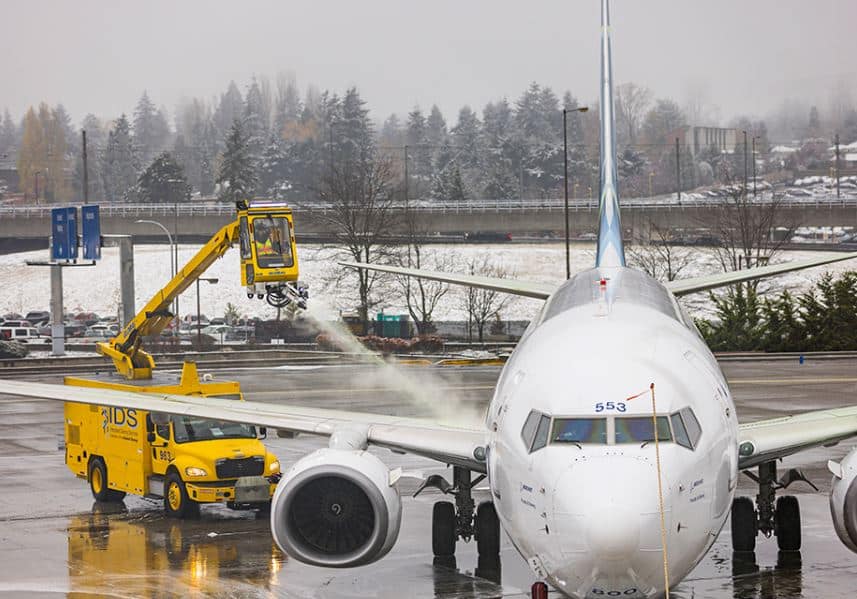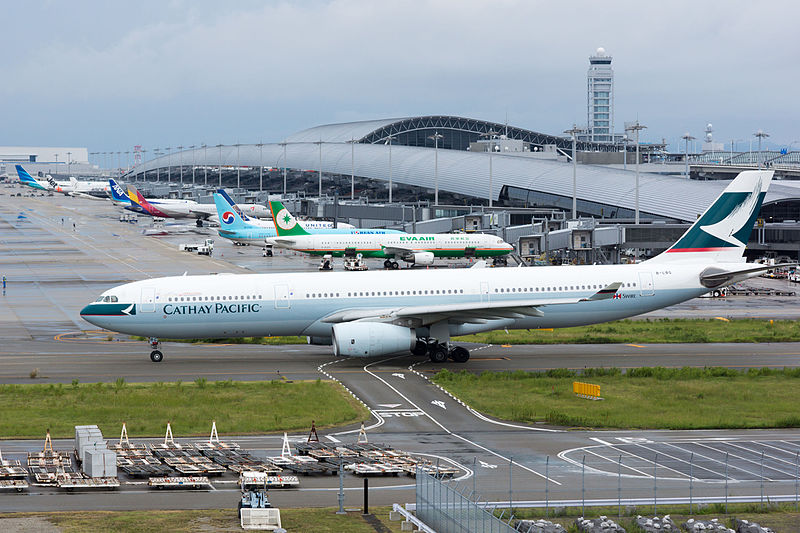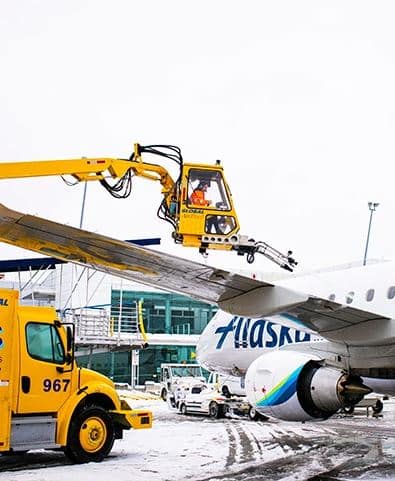Airlines
This is How Alaska Airlines is prepping for winter storms

Everyone knows snow can make the holidays extra cozy. But it can also cause headaches for people traveling during the ‘most wonderful time of the year.’
Peek inside Alaska Airlines’ first 737-800 retrofit(Opens in a new browser tab)
Pacific Northwest forecasts are calling for the possibility of snow beginning this weekend and continuing throughout the week. We could see up to three separate snowstorms that could span rain/snow showers to snow actually accumulating on the ground.
How should I proceed if an aircraft is about to crash?(Opens in a new browser tab)
At Alaska, it prepared to pull every lever to get you to your holiday destination, but disruptions from the snow and ice do happen. While team is working hard to get guests where they need to go, we want to share some of the reasons why we do what we do:
Why do the impacts feel worse in Seattle?
Seattle is Alaska’s hometown, and operations represent the largest percentage (by a wide margin) of departures and arrivals at Seattle-Tacoma International Airport (SEA) compared to other airlines. Because of this, more of guests are impacted when something impacts operations at Seattle. If another airline’s main hub got hit with a snowstorm, hurricane or power outage, they would be disproportionately impacted.
For context, SEA has a very small footprint by acreage compared to other metropolitan airports. This constrains ability to deice entire schedule of flights in wintry weather. Because the space doesn’t allow for that type of volume, they have to thin out their schedule to keep planes moving.
Why do we cancel flights before snow arrives?
We use numerous tools and resources to help us predict the weather. When forecasts tell us to expect snow or ice, we know we need to act. Freezing temperatures and precipitation mean that we need to deice aircraft before they can safely fly. Much like putting chains or studded tires on your car before hitting a snowy road, deicing aircraft slows down operation. This means we can’t move normal number of aircraft into and out of the airport. In order to reduce traffic jams, they need to proactively cancel flights from schedule so they can keep as many aircraft moving as possible.
If need to cancel flights, they try and let impacted guests know as early as possible. This means it could look clear and beautiful outside, but your flight tomorrow may have been canceled.
Why does an airplane need to be deiced?
Whenever there’s any snowfall or ice on aircraft, it begin deicing procedures as part of safety protocol. Aircraft cannot safely operate if there is snow or ice accumulation on the wings or tails, so it’s critical that remove it before takeoff.
It has a full fleet of trucks, equipment and personnel across stations ready to do that work, along with a well-stocked amount of deicing solution. They work as quickly as the airport and weather conditions will safely allow. However, deicing aircraft at the gate can lead to longer wait times on the tarmac—but safety comes first.
How to be a pro winter traveler
- Download mobile app to check-in, pay for bags and stay up to date on any changes to your reservation—it’s like having a travel agent at your fingertips.
- Always check the status of your flight before heading to the airport. You can do this on mobile app or alaskaair.com.
- Allow extra time to travel to the airport and navigate security.
- Stay up to date on restrictions for unaccompanied minors and pets flying in the cargo hold. Often during winter weather, it will impose these restrictions to keep everyone safe.
What to do if your flight is canceled?
If your flight has been canceled, you will be contacted and reaccommodated on another flight. You will be emailed a special phone number to call if you need further help with your reaccommodation.

Airlines
ANA and Air India Launch Codeshare Agreement for Enhanced Travel Options

The national flag carrier of India, Air India, and All Nippon Airways (ANA) have signed a business deal to initiate a codeshare alliance that will link India and Japan.
Starting on May 23, customers will have more flight options with this cooperation between the two Star Alliance members. By consolidating flights from both airlines onto a single ticket, passengers will be able to go to their selected destinations more quickly. Additionally, both passengers on codeshare flights can take advantage of the premium services that Star Alliance provides to its premium members, like priority boarding and lounge access.
ANA will use its “NH” code on Air India flights between Narita and Delhi, and Air India will add its “AI” code to ANA’s flights between Haneda and New Delhi and Narita and Mumbai. These codes will go on sale on April 23.
Soon, the two airlines hope to add more destinations as part of their growing partnership. Through expanded chances for visitors from both nations to explore each other’s wonders, this agreement will help to strengthen the economic and commercial links between Japan and India. The airlines’ individual websites, reservation systems, and travel companies will all offer codeshare flights for sale.
Chief Commercial & Transformation Officer of Air India Nipun Aggarwal stated, “This codeshare agreement with All Nippon Airways marks an important step forward in connecting India and Japan.” “This partnership increases our network’s reach and provides our customers with more options for flights between the two nations as well as seamless travel experiences. We anticipate working well with ANA and looking at potential future collaboration opportunities.”
Airlines
An A320 plane flew for 28 minutes with both pilots asleep

In a startling incident, an Airbus A320 operated by an Indonesian airline, Batik Air, flew for a harrowing 28 minutes with both pilots asleep at the controls.
The alarming event unfolded on Batik Air Flight 6723, carrying 153 passengers, en route to Soekarno–Hatta International Airport in Jakarta. The saga began when the first officer allowed the captain to take a nap, only to fatigue himself, attributing his drowsiness to caring for his one-month-old twins. As the pilots dozed off, the aircraft veered off-course, prompting concerns from air traffic control (ATC) who lost contact with the flight 90 minutes into its journey.
Despite the pilots being unresponsive for nearly half an hour, ATC managed to track the aircraft using radar as it covered a staggering 210 nautical miles, equivalent to the distance between New York and Washington, D.C. The captain eventually woke up, realizing the perilous situation and rousing his co-pilot.
After correcting the flight path, the captain attributed the radio silence to a “communication problem,” and the plane eventually touched down safely in Jakarta. However, the incident sparked widespread concern and investigation by Indonesia’s transport ministry.
A preliminary report revealed that the second-in-command had not rested adequately before the flight, shedding light on the potential dangers of pilot fatigue. While the identities of the pilots remained undisclosed, the incident underscored the critical importance of ensuring crew members are well-rested and fit for duty.
Despite the gravity of the situation, the swift actions of the awakened captain averted disaster, emphasizing the necessity for robust safety protocols and measures within the aviation industry.
Airlines
Ex-Cathay Pacific A330-300 Destroyed by Fire during Long-Term Storage at Spain

In a dramatic turn of events, an ex-Cathay Pacific Airbus A330 met a fiery end at Ciudad Real Airport in Spain. The aircraft, with a distinguished service history spanning 28 years, was resting in long-term storage at the airport when disaster struck.
Reports emerged detailing the unfortunate incident, painting a picture of destruction and chaos. The once majestic A330, bearing the serial number MSN113, became engulfed in flames while undergoing dismantling procedures. What began as a routine process turned into a nightmare as a fire erupted in the aircraft’s tail section, quickly spreading to consume the entire fuselage.
Emergency responders, including the Civil Guard, medical teams, and law enforcement personnel, swiftly descended upon the scene to contain the inferno. Despite the intensity of the blaze, their coordinated efforts prevented any injuries among both the public and the brave individuals working to quell the flames.
By mid-afternoon, the Ciudad Real fire service declared victory over the fire, announcing its successful extinguishment. However, the aftermath left behind a trail of questions and concerns. Authorities launched an investigation into the cause of the blaze, with initial findings shrouded in mystery.
The head of the airport expressed astonishment at the unprecedented event, highlighting it as the first instance where airport infrastructure had to grapple with such a significant fire-related challenge. As the investigation unfolds, the aviation community awaits answers, hoping to shed light on the circumstances leading to the demise of the retired Airbus A330.



























